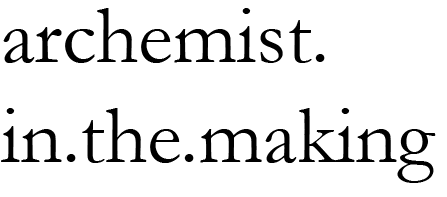During my stay in Hong Kong, a family friend invited me to attend a debate organised by RIBA HK Chapter. The topic: “Linear Design Process = Efficient Design Process”.
Guiltily, I admit that I didn’t give the topic much of a thought initially, as my mind initially jumped to the literal thought of a straightforward process: narrow-minded, rigid and unforgiving in alternatives. Needless to say, I was rather perplexed by the argument itself considering that design processes (at least from my design experience at university) requires various hoops to jump through and elaborate conversations in order to successfully reach our destination.
The first half of the debate was overwhelming with a lot of opinions, with the affirmative team explaining about the linear design process is required because efficiency is prioritised in our society today - whether it’d be designing a building from an empty site, otherwise traversing from location a to b, it’d always be better with a straightforward approach. I wasn’t entirely convinced by the initial arguments made by the affirmative team until the opposition team presented that linear process doesn’t allow trial and errors in order to lead to an efficient, moreover successful design, otherwise a polished result.
2000 people testing prototypes for Dyson.
Hundreds of lightbulb trials for Edison.
While it was a convincing argument, considering that there has been many trial and errors (going forward, stepping back, and so on) coupled with the constant advancement of technology, the opposition team somehow has woven their argument that completely contradicts their own statements.
“Linear” the word itself seems to carry an unfortunate connotation of presenting itself as a mere straight line. However, when combined with “design” and “process” itself, the stereotypical image of association disappears itself altogether. Rather than perceiving it as a simple process of following a recipe of steps one to three, it can be rephrased with having an outline of methodology. Indeed, we need to understand that there will always be many trial and errors when we approach a design, however that trial and error is simply a part of a process - a simple step within a sequence of events. While it can be also argued that this trial and error deviates from our simple, straightforward procedure within the creative industry, there is always a plan of action, backup plans and reiterations - all still sitting under umbrella term of ‘design process’.
So where does linear fit in?
Last semester, while preparing my proposal of a program designed for a civic centre, my friend suggested removing the simple arrows from the diagram to avoid the linearity. After a few links and switch-up of arrows later, my diagram became a formation of many links an chains - looking back at it now, if I were to separate the processes on their own, it still remains a step by step methodology - still linear in a manner yet disguised in fluid form.
I went from a line to a circle... which still is somewhat linear but disguised in a fluid form...
Having said, there was also one area that the opposition team failed to include (three minutes is a very short time) was acknowledging “efficiency” - something Hong Kong (and other places) strongly value. I am positive many people have been in a place where their designs are going nowhere, expectations are not met and another design cycle happens again. As frustrating as it sounds, there are limitations to how many cycles one can endure, let alone setting certain boundaries in order to prevent repetition of these patterns. Ironically, even if the practice itself is tedious - it still remains as a cycle, and can ironically become inefficient as well.
Perhaps then, in order to achieve efficiency, is it reconsider the relationship between the clients and the designers instead? We know that design requires a tremendous amount of collaborative skills, consulting many parties, yet one indecisive mind and one human opinion can erupt the whole process. I myself have endured a tedious yet worthwhile experience while our class were figuring out the best way to present our work. Overall it was a logical (and dare I say) linear process that included a lot of prototyping - but due to our sensitivity to space, topic and outcomes we wished to achieve, by having one wavering mind the design underwent four iterations and face lifts before we could bring out our hammers and drills.
So going back to the topic itself - ideally, linear design process does equate to efficient design process. However, it takes a fickle otherwise an indecisive mind to collapse the system. Trial and error will always be ever present, however it is a part of a design process. Looking back at the event itself - I feel that all of us were ever focus on the accidental stereotypical perception of ‘linear’ without fully realising that our process has been embedded within our actions. Albeit, while it is sometimes the best way to deliver an efficient outcome however, I still strongly believe that it requires smart decisions and excellent team work in order to achieve the desired process.
My favourite MIBT question:
Strict observance of the established rules is likely to prevent attaining a good outcome
Do you:
a. Strongly Disagree
b. Disagree
c. Neutral
d. Agree
e. Strongly Disagree?
Links:

